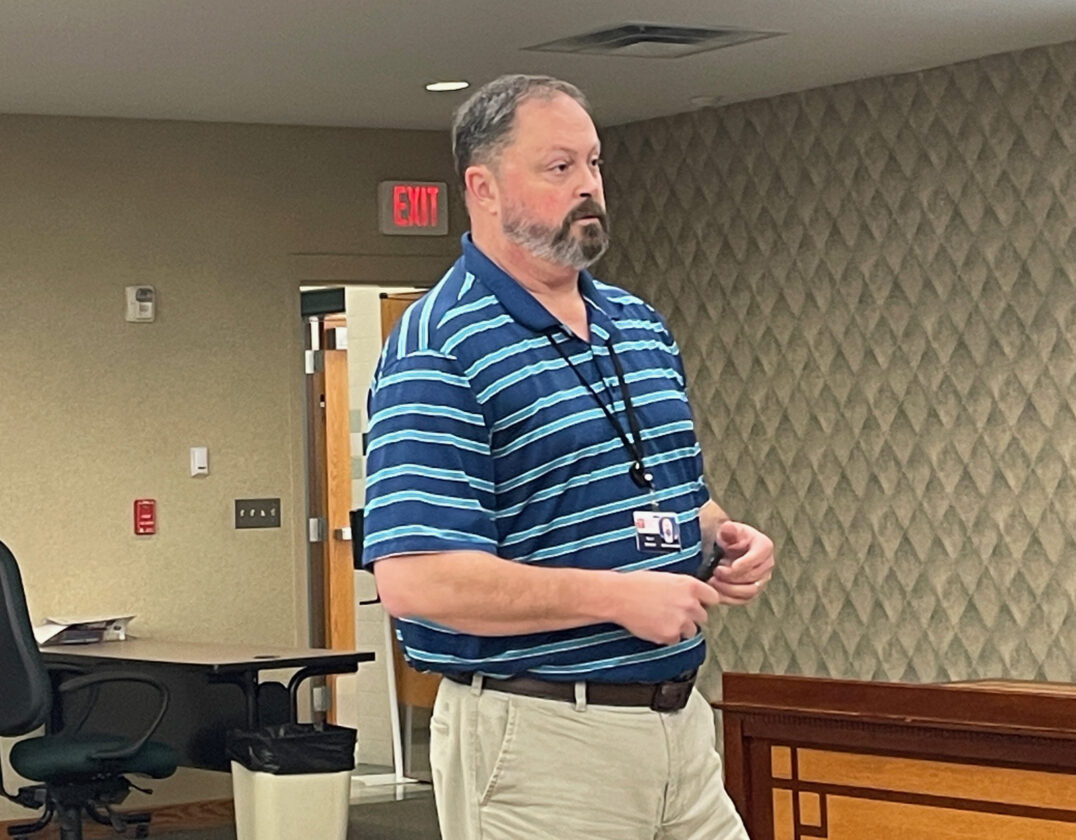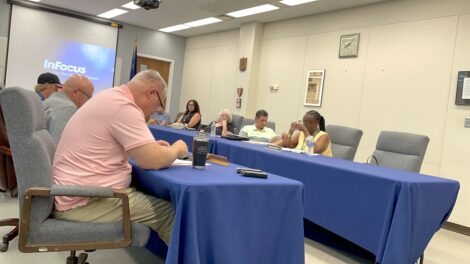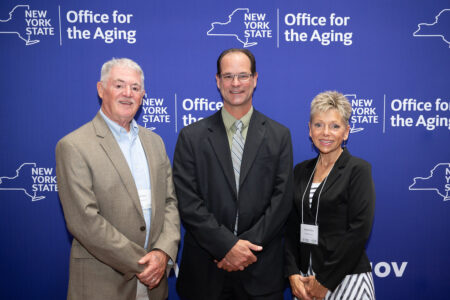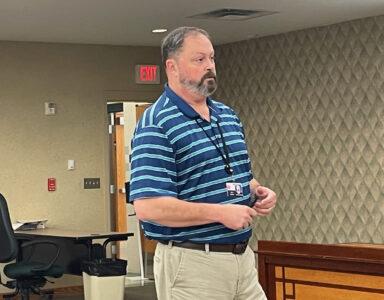JPS Hears About New State Ed Program

Kevin Whitaker, Jamestown Public Schools superintendent, is pictured Tuesday talking about the New York State Portrait of a Graduate program. P-J photo by Michael Zabrodsky
Beginning in the fall, students in the Jamestown Public Schools will participate in Portrait of a Graduate.
First introduced in November 2024, Portrait of a Graduate is a new initiative by New York State Department of Education which has four phases: planning year (fall 2024-summer 2025); phase 1 – installation (fall 2025 – summer 2027); phase 2 – initial implementation (fall 2027 – summer 2029); and phase 3 – full implementation and scaling up (fall 2029 and beyond).
The JPS Board of Education heard about the state initiative Tuesday.
“This is the next phase in New York state’s education model and philosophy, as well as curriculum, graduation requirements, interface with the community and focus on developing citizens from high school who can immediately incorporate themselves into work and civil and civic duties,” said Superintendent Dr. Kevin Whitaker.
Whitaker added that during phase 1, rubrics, learning expectations, and support networks will be rolled out. Whitaker noted that within the learning expectations, learning standards will be prioritized and reformatted.
“The learning standards are going to change. Those learning standards may include financial literacy and climate education, and they (state officials) will release details on what the new credit requirement is,” Whitaker said.
During phase 2, Whitaker said, there will be a move to one diploma for all students, a sunset of diploma assessment requirements for all students, a redefining of credit to expand ways students earn credit, and support networks will be available.
In phase 3, Whitaker said, the new system will be phased in beginning with students who enter grade 9 in 2029, the new statewide transcript requirements will begin, and support networks will be available.
For the current juniors and seniors at Jamestown High School, they will graduate with one of three diplomas, local, Regents, or Regents with advanced designations.
For current 10th-, ninth-, and eighth-graders, students will continue to take the Regents exams, but will not be required to pass the Regents exams to earn a diploma. Students will graduate with NYS high school diploma, and may take Regents Exams to earn endorsements, including advanced designations, Whitaker said.
For current sixth- and seventh-grade students, there are no diploma assessment requirements. And for the fifth-grade students, they will be in the new system, and must demonstrate proficiency in both the high school learning standards and the Portrait of a Graduate.
According to the state, there are six components to the Portrait of a Graduate, which serves as the guiding framework for the state’s education system and create a shared understanding of the skills and knowledge students are expected to demonstrate upon high school graduation.
Here are the components:
– Academically Prepared: by demonstrating a strong foundation in the New York State learning standards and being equipped with the knowledge and skills necessary to achieve success in college, careers, civic engagement, service, and life.
– A Creative Innovator: by utilizing imagination, curiosity, and flexible thinking to solve problems creatively, and develop new ideas and products, while adapting to evolving circumstances and challenges.
– A Critical Thinker: by analyzing information thoughtfully, evaluating evidence critically, and identifying patterns and connections between different pieces of information (across multiple content areas) to address complex issues and navigate the world with insight.
– An Effective Communicator: by articulating ideas clearly and confidently through speaking, writing, and the use of different types of media for various purposes, while engaging with diverse audiences and actively listening to different perspectives.
– A Global Citizen: by acting responsibly and ethically within local, global, and digital communities, employing civic knowledge, skills, and mindsets to promote global sustainability and contribute positively to a culturally diverse, democratic society.
– Reflective and Future Focused: by engaging in self-reflection to identify strengths and areas for growth, setting meaningful goals, using social awareness to maintain supportive relationships, and demonstrating responsible decision-making that prioritizes social, emotional, and mental well-being.
“These six attributes are centered around Culturally Responsive-Sustaining Education,” state education officials wrote in a prepared statement. “A New York State high school graduate who is culturally responsive will build strong, respectful relationships, valuing diverse perspectives as essential to a rigorous, inclusive learning community. Concurrently, students who embody cultural responsiveness and academic readiness – demonstrating creativity, critical thinking, communication, reflection, and global awareness – will be prepared to learn, grow, innovate, and contribute meaningfully to society. Ultimately, these graduates will be equipped with the interpersonal and intellectual skills needed to thrive in an interconnected, ever-changing world.”
Full implementation, state officials said, is scheduled for fall 2029.
“We really want to think about this, not just in terms of the end, but from the time they (students) start school, from the earliest time when they’re learning all of those foundational skills in preschool, elementary school, and then all the way up through middle school into high school. So these really do span across all levels,” said Assistant Superintendent for Instruction and School Improvement Tina Sandstrom.
JPS Board President Paul Abbott said that with the new implementation he wants to ensure that school counselors communicate more with students and parents.
“I worry that (some) students might get lost in this if there’s not frequent engagement,” Abbott said.
Whitaker said as the different phases are implemented, the district must support students in the program.






